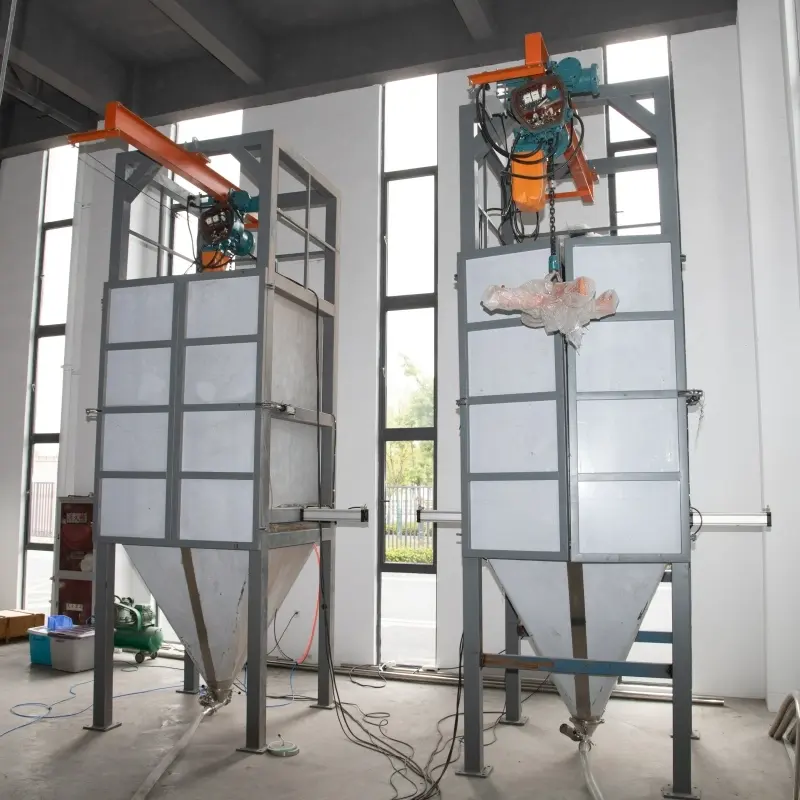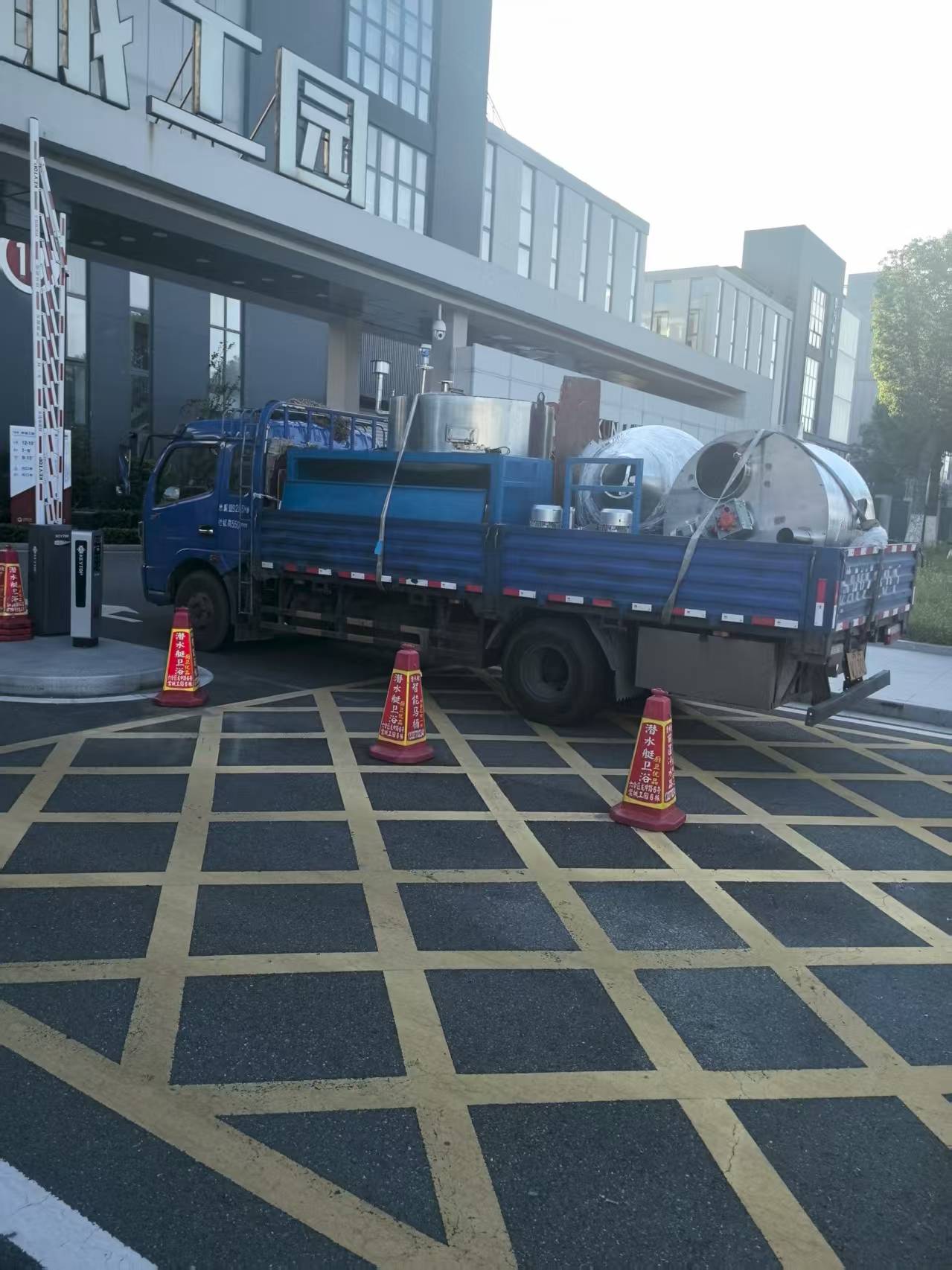وحدة التغذية الحجمية مقابل وحدة التغذية الوزنية
وقت الإصدار: 2025-05-12
المغذيات الحجمية والثقالية نوعان من المعدات المستخدمة في أنظمة مناولة المواد، وخاصةً لتغذية المواد السائبة كالمساحيق والحبيبات والحبيبات في العمليات بطريقة مُتحكم بها. ومع ذلك، تعمل هذه المغذيات بناءً على مبادئ تشغيل مختلفة وتُناسب تطبيقات مُختلفة. إليك مُقارنة:
وحدة تغذية حجمية
مبدأ التشغيل:
يتحكم المغذي الحجمي في تدفق المواد بناءً على حجم محدد بمرور الوقت. يقيس ويوزع حجمًا محددًا من المواد لكل وحدة زمنية، غالبًا باستخدام نظام لولبي أو حزام أو مثقاب دوار. تُحدد كمية المواد المُغذّاة بسرعة جهاز التغذية ومساحة المقطع العرضي للمغذي.
الميزات الرئيسية:
يتم التحكم بالحجم: تعمل وحدة التغذية عن طريق توفير حجم ثابت من المواد.
فعّالة من حيث التكلفة: أقل تكلفة بشكل عام من المغذيات الوزنية.
بسيطة ومباشرة: المغذيات الحجمية عادةً ما تكون أسهل في الصيانة والتشغيل.
لا يوجد قياس للوزن: نظرًا لأنه لا يقيس الوزن، فإن دقته تعتمد على اتساق كثافة المادة.
المزايا:
تكلفة أقل: بسبب التصميم البسيط وعدم وجود نظام قياس يعتمد على الوزن.
مناسب للمواد المتناسقة: مثالي عندما تكون كثافة المادة متناسقة نسبيًا.
سهولة التركيب والصيانة: عدد أقل من المكونات التي تحتاج إلى معايرة.
العيوب:
أقل دقة للكثافات المتغيرة: إذا تقلبت كثافة المادة، فقد يصبح قياس الحجم غير دقيق، مما يؤدي إلى اختلاف في كمية المواد التي يتم تغذيتها.
يتطلب اتساقًا في المواد: يعمل بشكل أفضل مع المواد التي تتمتع بخصائص تدفق وكثافات مستقرة.
وحدة التغذية الوزنية
مبدأ التشغيل:
أ وحدة تغذية وزنية يتحكم النظام بتدفق المواد بالوزن. ويقيس باستمرار وزن المواد المُغذّاة، مستخدمًا غالبًا ميزانًا أو نظام خلية حمل لمراقبة معدل التدفق. ويُضبط معدل التغذية بناءً على الوزن المُقاس لضمان توصيل الكمية الصحيحة من المواد.
الميزات الرئيسية:
يتم التحكم بالوزن: يتم ضبط تدفق المواد على أساس القياس في الوقت الحقيقي للوزن.
دقة أعلى: نظرًا لأنه يزن المادة، فإنه يوفر معدل تغذية أكثر دقة وثباتًا، خاصة للمواد ذات الكثافة المتغيرة.
يتطلب خلايا تحميل أو موازين: يتضمن عادةً أنظمة أكثر تعقيدًا مثل خلايا التحميل لقياس الوزن.
المزايا:
الدقة: توفر دقة عالية وتعوض عن الاختلافات في كثافة المادة أو السيولة.
مناسب لمواد مختلفة: يمكنه التعامل مع مجموعة واسعة من المواد ذات الكثافات وخصائص التدفق المختلفة.
الاتساق: يوفر معدل تدفق أكثر اتساقًا للمواد، حتى عندما تتغير خصائص المواد.
العيوب:
تكلفة أعلى: بسبب تعقيد نظام الوزن، عالية الدقة مغذيات وزنية تكون عادة أكثر تكلفة.
مزيد من الصيانة: تتطلب خلايا الحمل وأنظمة الوزن معايرة وصيانة منتظمة.
التعقيد: أكثر تعقيدًا في التثبيت والإعداد مقارنة بالمغذيات الحجمية.
جدول المقارنة الملخص
| ميزة | وحدة تغذية حجمية | وحدة التغذية الوزنية |
| مبدأ | القياسات والتغذية حسب الحجم | القياسات والتغذية حسب الوزن |
| دقة | أقل دقة (يعتمد على كثافة المادة) | دقيق للغاية (يعوض عن اختلافات الكثافة) |
| يكلف | تكلفة أقل | تكلفة أعلى |
| تعقيد | بسيطة، أسهل في الصيانة | أكثر تعقيدًا، يتطلب معايرة |
| ملاءمة | الأفضل للمواد المتناسقة ذات الكثافة المستقرة | الأفضل للمواد المتغيرة ذات الكثافة المتقلبة |
| التطبيقات | مناسب للعديد من مهام التغذية العامة | مثالي للعمليات الدقيقة التي يتم التحكم في وزنها |
خاتمة:
تُعد المغذيات الحجمية خيارًا جيدًا للعمليات التي تتسم بثبات اتساق المواد وكثافتها. فهي اقتصادية وسهلة الاستخدام، مما يجعلها مثالية للتطبيقات البسيطة.
تُعد المغذيات الوزنية أكثر ملاءمةً للتطبيقات التي تتطلب تحكمًا دقيقًا في تغذية المواد، خاصةً عندما تختلف خصائص المواد. فهي توفر دقةً أعلى، مما يجعلها ضروريةً في الصناعات التي تتطلب كمياتٍ دقيقةً من المواد، مثل الصناعات الكيميائية والغذائية والدوائية.


